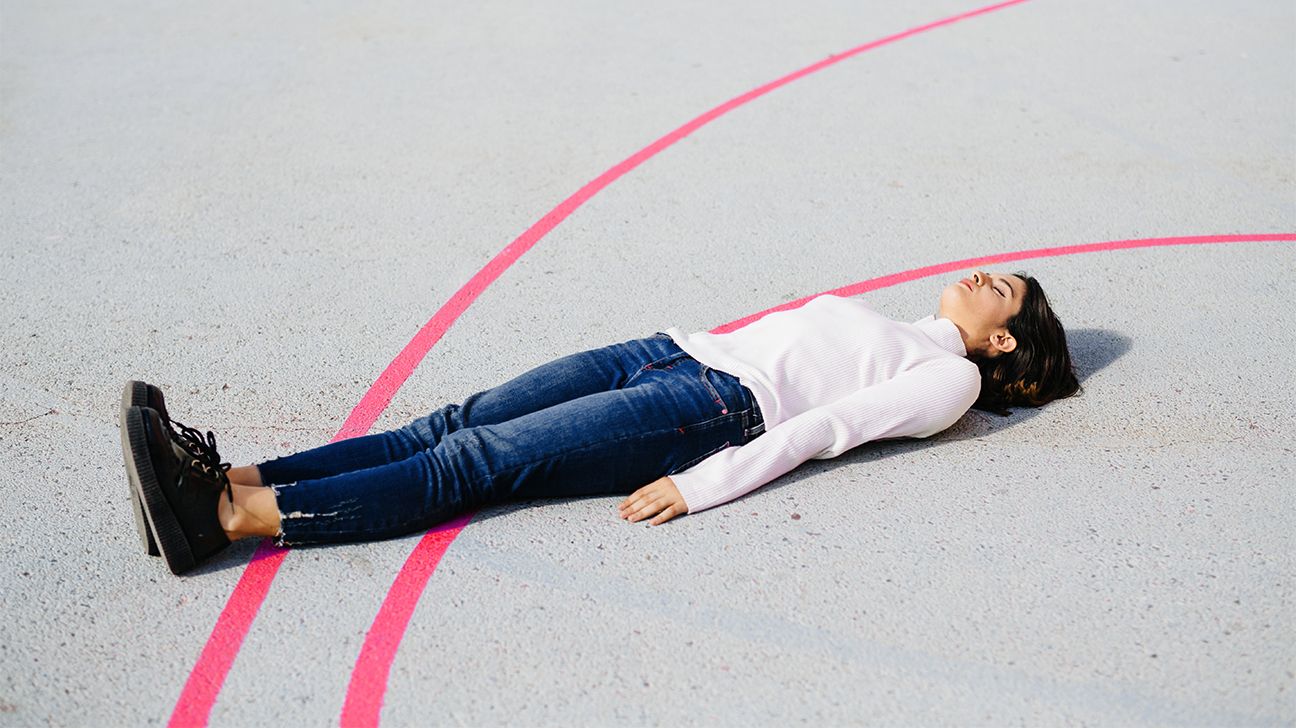Anxiety can wreak havoc on your emotions, your health, your life. And while getting your symptoms under control often calls for a combo of short- and long-term strategies, there’s one simple method that can help you feel calmer right when anxiety starts to take over.
It’s called deep breathing. Sure, it might sound seriously basic, but it’s widely acknowledged as being one of the best tactics for reducing stress.
Deep breaths trigger a chain of physical reactions that signal to your brain that everything really is A-OK: It helps you get the right exchange of oxygen and carbon dioxide, slows your heart rate, and brings your blood pressure down — all promoting a state of rest and tranquility.
And while you might think that breathing is, well, breathing, there are a bunch of specific exercises you can do when you feel like the sh*t is starting to hit the fan.
Sitting comfortably or laying flat, put one hand on your belly and the other on your chest. Breathe in through your nose, letting your belly puff out. Breathe out with your lips pursed, like you’re trying to whistle.
Use your hand to guide your belly in, like you’re “pushing” all of the air out. Repeat slowly 3 to 10 times.
Kick off by fully exhaling while making a loud whoosh. Slowly inhale through your nose to the count of 4, hold your breath to the count of 7, and exhale fully through your mouth to the count of 8. Repeat 3 more times for a total of 4 cycles.
FYI, the breath-holding might make you feel a little lightheaded, especially the first few times you try this. That’s why you shouldn’t do it more than 4 times in one sitting (and, best to not do this while driving).
Lay on your back with your left hand on your belly and your right hand on your chest. Inhale through your nose, aiming to only fill your lower belly (not your chest) with air, then continue inhaling to fill your chest.
You should notice your left hand rising as your belly fills with air. Your right hand will rise as your chest fills. Exhale slowly through your mouth, making a whooshing noise. Repeat 3 to 5 times.
Shortly after waking up, stand up and bend forward at the waist. Keep your knees slightly bent and let your arms dangle.
Breathe in slowly and deeply while you slowly roll back up to standing. Hold your breath for a few seconds while standing still. Slowly breathe out while returning to the bent position. Repeat as desired.
This yoga breathing exercise is thought to engage your parasympathetic nervous system, helping you feel more relaxed. Sit or lay comfortably with your eyes open or closed, then breathe in through your nose for 4 counts.
Breathe out through your nose for 4 counts and repeat several times. After you get the hang of it, you can try extending your inhale and exhale counts to 6 or even 8.
Another yoga breathing technique, it helps clear out energy to create a sense of calm. Sitting comfortably, place your left hand on your left knee and lift your right hand toward your nose.
Use your right thumb to close your right nostril. Breathe in through your left nostril and close the left nostril with your fingers. Then open the right nostril and breathe out through that side. Now breathe in through the right nostril and close it, then open the left nostril and breathe out.
That’s a full cycle — now keep on going for up to 5 minutes.
Slowly breathe in through your nose for 4 seconds, then breathe out through your mouth for 6 seconds, feeling your stomach fill up and empty with each inhale and exhale.
Repeat 6 times, doing it slowly enough so you finish the sixth cycle after a minute. (FYI, this one has been scientifically proven to boost your mood.)
Like the name implies, this yoga breathing exercise involves making roar-like exhales, sort of like a lion. In a kneeling position, breathe in through your nose. Then breathe out while making a “ha” noise, opening your mouth wide and sticking your tongue out as far as you can. Repeat up to 6 times.
This exercise can be especially helpful if you feel yourself starting to hyperventilate, which can create an imbalance of oxygen and carbon dioxide in your blood and leave you feeling dizzy or breathless.
To get the ratio to a better place, breathe slowly through pursed lips, sort of like you’re blowing out a birthday candle. It’s easy — and effective.
Breathing is something we do all the time (obviously). But slowing down and doing it with intention can be an instant anxiety buster. Next time you’re starting to feel anxious, hit pause and give deep breathing a try.
After just a minute or 2 you’re guaranteed to feel at least a little more chill.


